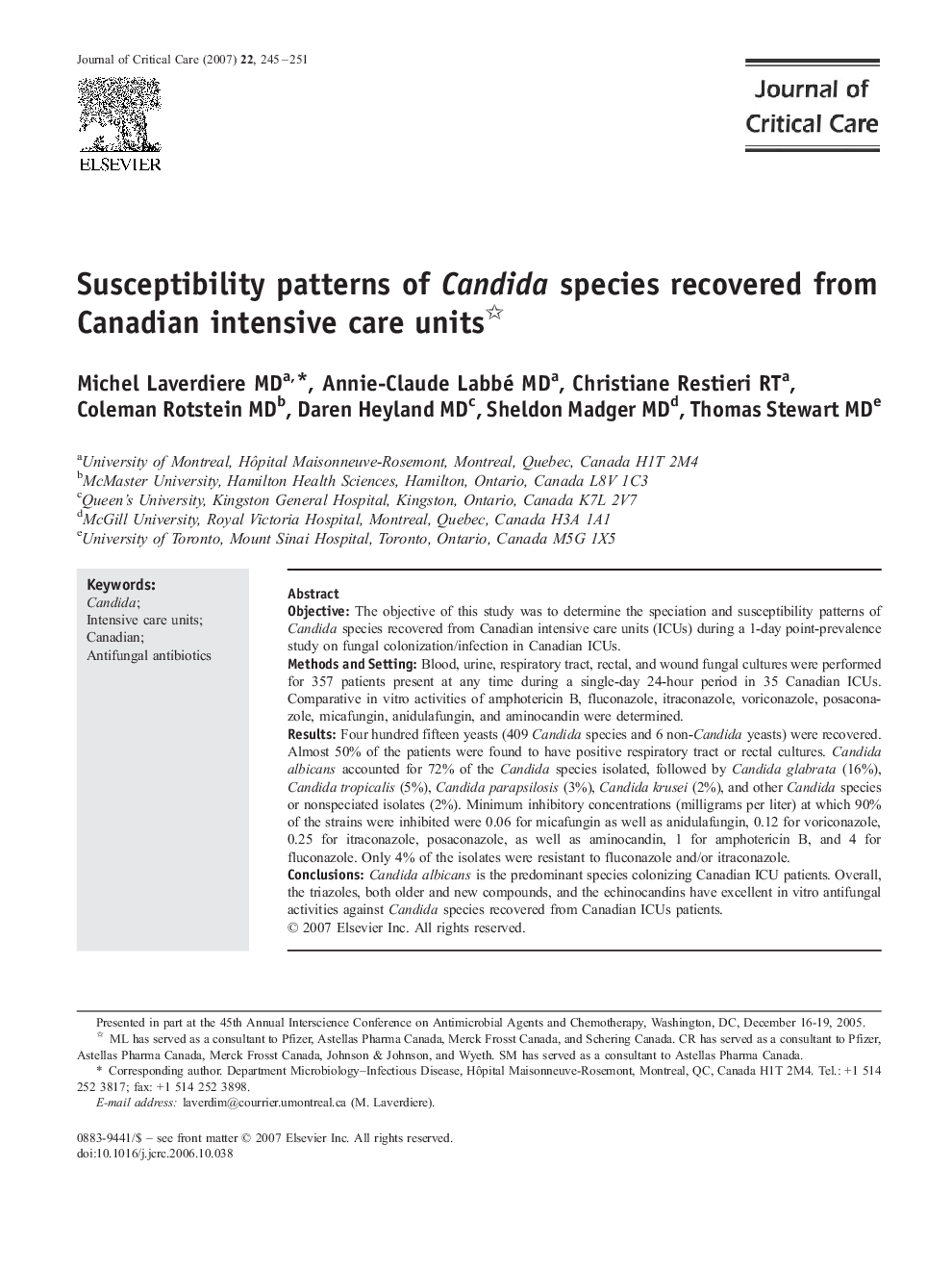| کد مقاله | کد نشریه | سال انتشار | مقاله انگلیسی | نسخه تمام متن |
|---|---|---|---|---|
| 2765689 | 1150970 | 2007 | 6 صفحه PDF | دانلود رایگان |

ObjectiveThe objective of this study was to determine the speciation and susceptibility patterns of Candida species recovered from Canadian intensive care units (ICUs) during a 1-day point-prevalence study on fungal colonization/infection in Canadian ICUs.Methods and SettingBlood, urine, respiratory tract, rectal, and wound fungal cultures were performed for 357 patients present at any time during a single-day 24-hour period in 35 Canadian ICUs. Comparative in vitro activities of amphotericin B, fluconazole, itraconazole, voriconazole, posaconazole, micafungin, anidulafungin, and aminocandin were determined.ResultsFour hundred fifteen yeasts (409 Candida species and 6 non-Candida yeasts) were recovered. Almost 50% of the patients were found to have positive respiratory tract or rectal cultures. Candida albicans accounted for 72% of the Candida species isolated, followed by Candida glabrata (16%), Candida tropicalis (5%), Candida parapsilosis (3%), Candida krusei (2%), and other Candida species or nonspeciated isolates (2%). Minimum inhibitory concentrations (milligrams per liter) at which 90% of the strains were inhibited were 0.06 for micafungin as well as anidulafungin, 0.12 for voriconazole, 0.25 for itraconazole, posaconazole, as well as aminocandin, 1 for amphotericin B, and 4 for fluconazole. Only 4% of the isolates were resistant to fluconazole and/or itraconazole.ConclusionsCandida albicans is the predominant species colonizing Canadian ICU patients. Overall, the triazoles, both older and new compounds, and the echinocandins have excellent in vitro antifungal activities against Candida species recovered from Canadian ICUs patients.
Journal: Journal of Critical Care - Volume 22, Issue 3, September 2007, Pages 245–250